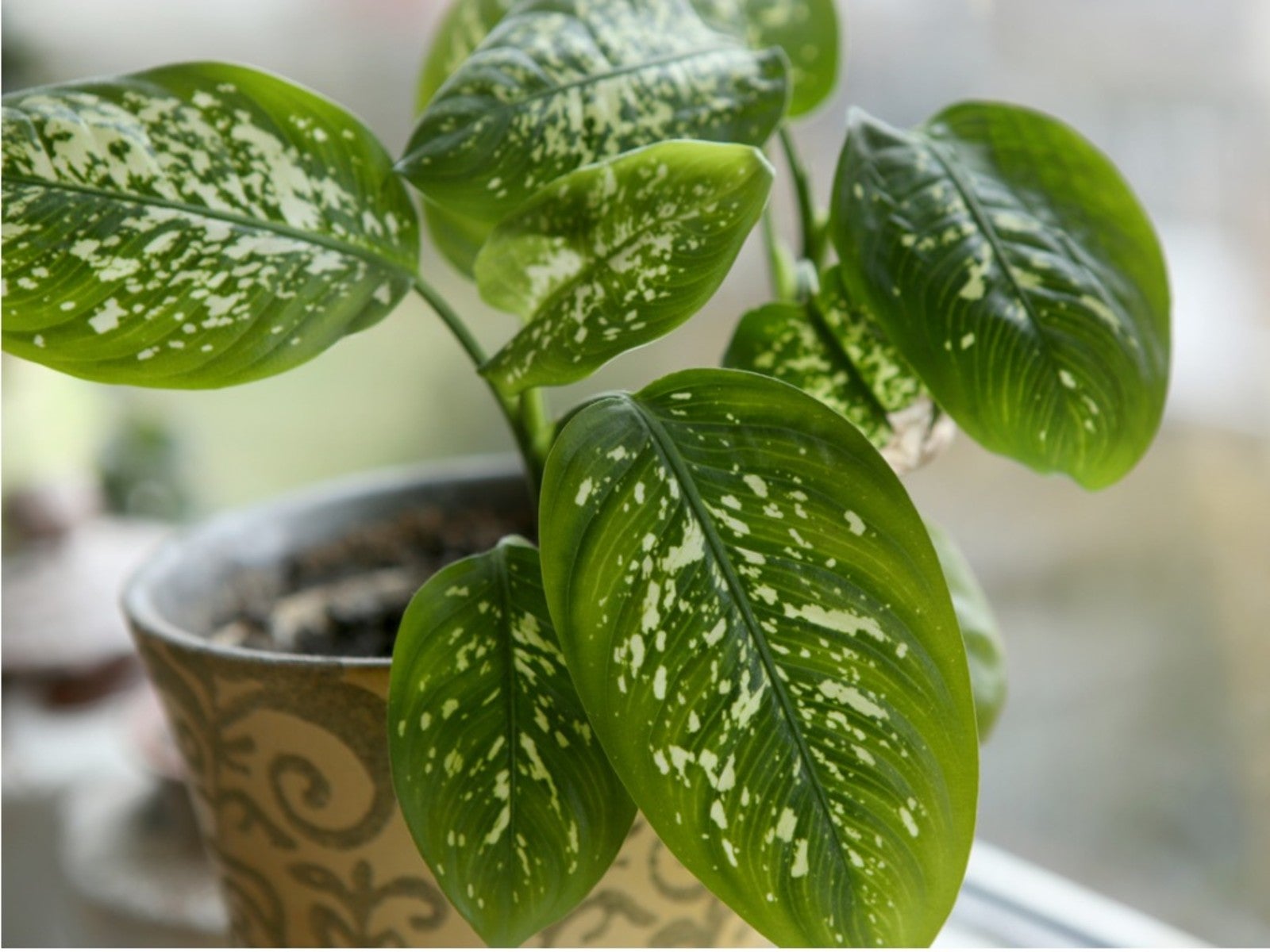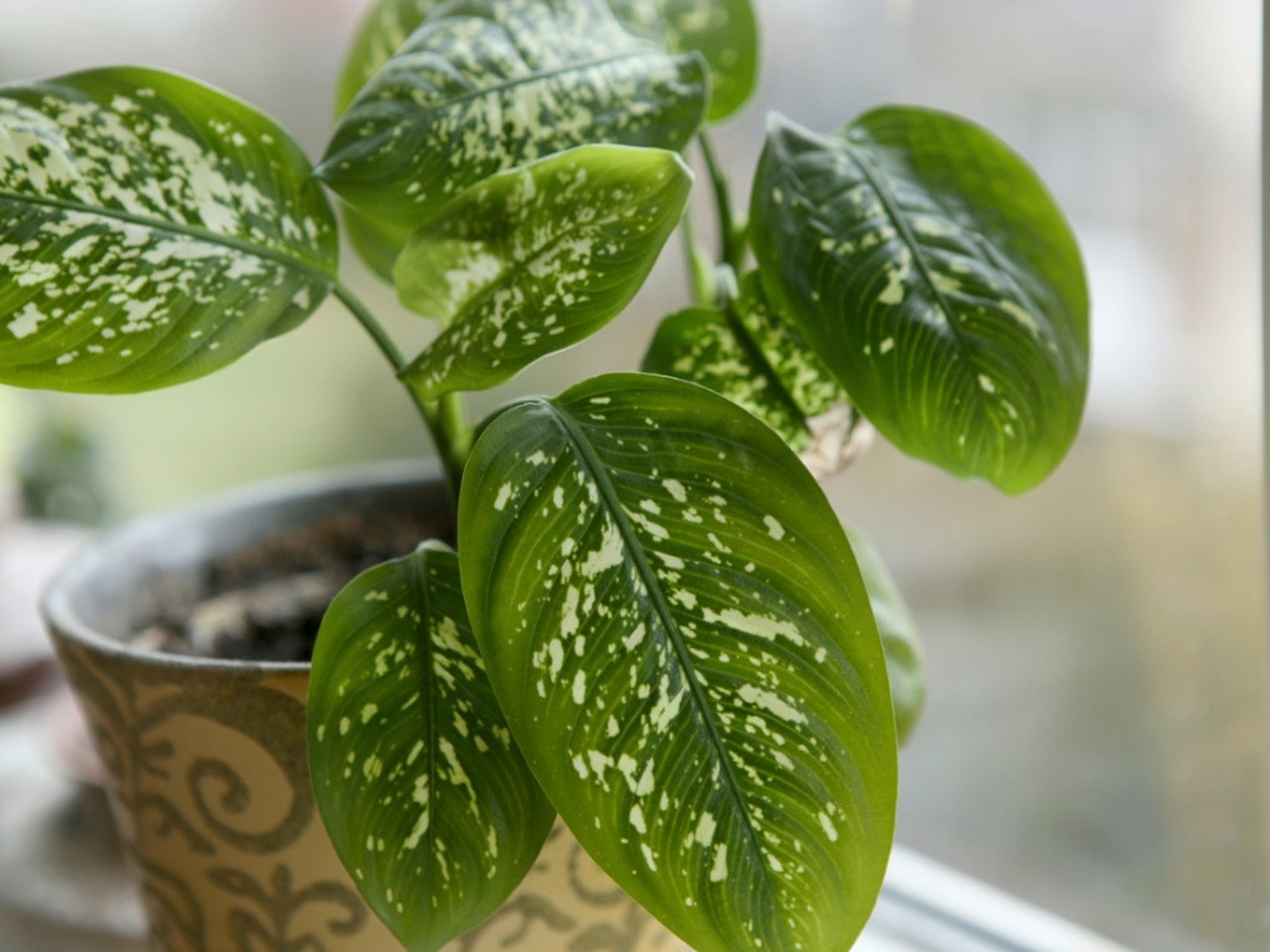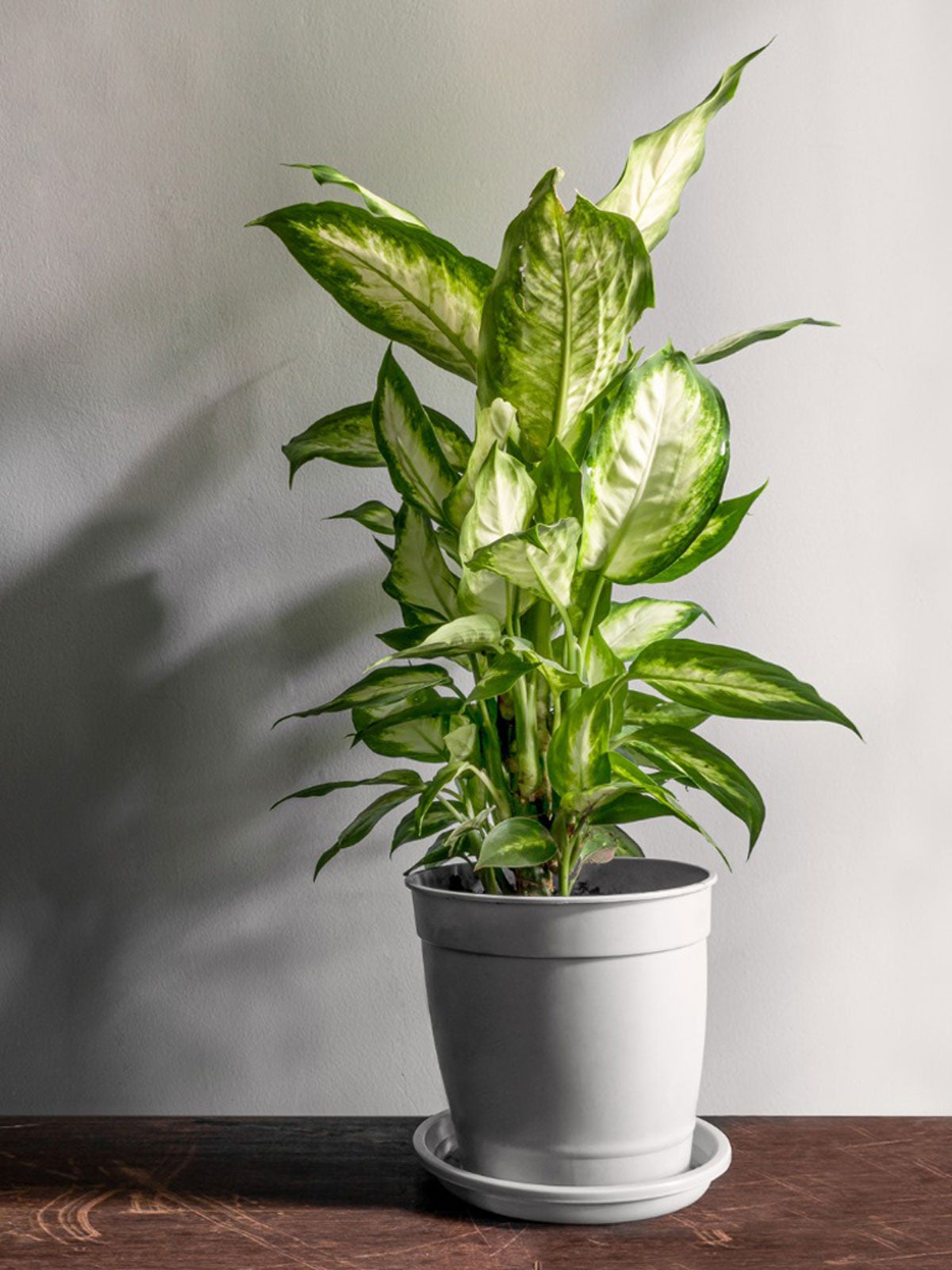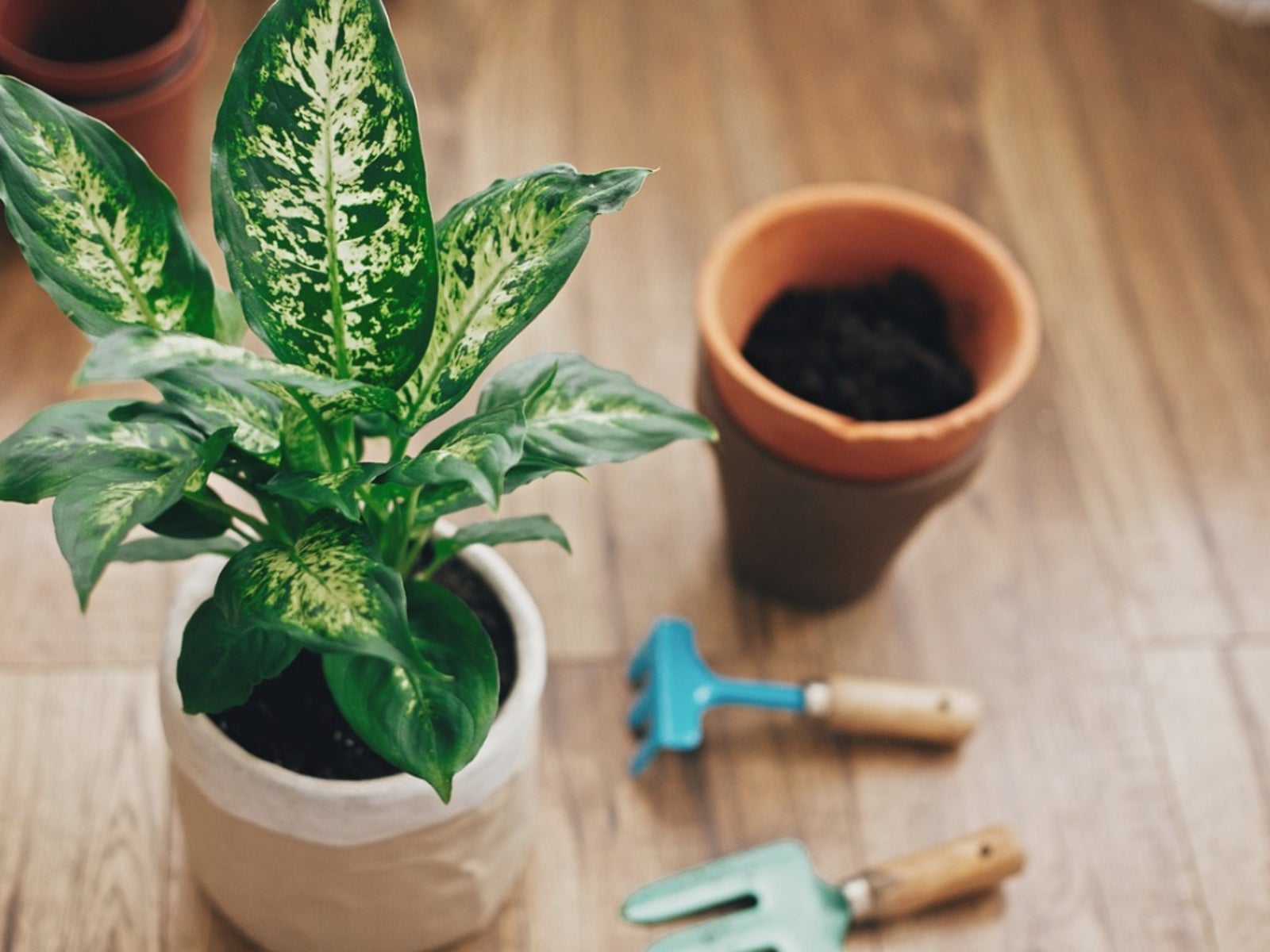Dieffenbachia Troubleshooting – Learn About Dieffenbachia Diseases


If you’ve kept houseplants for any time, you realize that disease is an issue you must deal with sometimes. This is true for all houseplants to some degree. Don’t be surprised if you have problems with dieffenbachia, as it is no different from other plants when it comes to this.
Learn as you go along, and you’ll find dieffenbachia troubleshooting is no more difficult than for any other houseplant. In fact, being prepared to correct a disease problem is important information for the indoor gardener. Learning why it has happened to your plant can help you correct it early before it spreads to other areas of the plant. Understanding how disease is passed or picked up may help you avoid it altogether.
Diseases of Dieffenbachia
Common diseases of this plant are most often fungal or bacterial in origin. If you’re adding a new dieffenbachia to your plant collection, check the plant carefully before purchasing. Don’t buy anything with spotted, yellowing, or wilting leaves or other unhealthy symptoms. Look at the root system inside the pot as much as possible.
Starting with a healthy plant helps you avoid future disease issues. Proper fertilization and watering techniques are especially important to this plant. The following disease issues, while not common, are most prevalent in Dieffenbachia according to Penn State. Should they appear on your houseplants begin the management process as soon as you see and identify them.
Anthracnose appears as oval to round brown spots surrounded by a yellowing halo. Spots are about two inches and may come to include small black fungal fruiting structures. Overhead watering spreads this disease. Water leaking from one plant onto another is particularly damaging. Always water at the roots, keeping foliage as dry as possible.
Bacterial leaf spot starts as small green or black spots. The shape becomes irregular turning tan, dark brown, or black. Water at the roots to keep leaves dry and remove damaged foliage if it appears. Keep tools clean, wiping blades down with alcohol after each cut.
Myrothecium Leaf Spot is a disease with bigger spots that are mostly oval. They are usually found on leaf margins and tips. The spots are gray brown. Concentric fungal fruiting rings form in the spot on the underside of plant leaves. Treat with a fungicide and remove conspicuously diseased leaves. Limit nitrogen fertilizer.
Gardening tips, videos, info and more delivered right to your inbox!
Sign up for the Gardening Know How newsletter today and receive a free copy of our e-book "How to Grow Delicious Tomatoes".
Wilt causes drooping and yellowing leaves. This often results from not enough or inconsistent moisture throughout the plant’s soil.
Browning margins of leaves result from too much fertilizer and not watering before using liquid fertilizer. Leaves can die, as can the whole plant if this process continues. Leach the soil if it does not contain fertilizer pellets. Limit fertilization or use the pellets for future feeding.
Correct dieffenbachia plant diseases with the helpful hints mentioned above. Proper watering, limited fertilization and occasional pruning with clean tools can make your beautiful houseplant specimens healthier and more attractive.

Becca Badgett was a regular contributor to Gardening Know How for ten years. Co-author of the book How to Grow an EMERGENCY Garden, Becca specializes in succulent and cactus gardening.
-
 Looking For Plants To Give You The Soft And Fuzzies? Try These 5 Fuzzy Leaf Plant Options
Looking For Plants To Give You The Soft And Fuzzies? Try These 5 Fuzzy Leaf Plant OptionsLovers of texture, drama, silver foliage and tactile plants will adore these special sensory garden additions. These fuzzy leaf plant options will leave you all aglow
By Susan Albert
-
 Get Ready For A Summer Of Hummers! Grow These Full Sun Hummingbird Plants and Flowers
Get Ready For A Summer Of Hummers! Grow These Full Sun Hummingbird Plants and FlowersIf you’re lucky enough to enjoy a sunny backyard, make sure you are maxing out on your pollinator opportunities and grow these full sun hummingbird plants and flowers
By Tonya Barnett
-
 Dieffenbachia Pruning Guide – Should You Cut Back Dieffenbachia Plants
Dieffenbachia Pruning Guide – Should You Cut Back Dieffenbachia PlantsDieffenbachia can tend to get leggy and grow unwieldy top growth in some situations. That’s when you know it is time to cut it back.
By Bonnie L. Grant
-
 Dieffenbachia Care In Winter: How To Winterize Dieffenbachia Plants
Dieffenbachia Care In Winter: How To Winterize Dieffenbachia PlantsOverwintering houseplants is important, and dieffenbachia needs specific conditions in the winter. Click this article for more information.
By Mary Ellen Ellis
-
 Propagating A Dieffenbachia: How To Propagate Dieffenbachia Plants
Propagating A Dieffenbachia: How To Propagate Dieffenbachia PlantsDieffenbachia is an attractive houseplant that adds a tropical statement to almost any room. You have the potential for an endless supply of new plants by propagating cuttings, and this article will help.
By Anne Baley
-
 Growing Dumbcane Dieffenbachia - How To Care For A Dieffenbachia Plant
Growing Dumbcane Dieffenbachia - How To Care For A Dieffenbachia PlantA true houseplant standby, Dieffenbachia is a beautiful specimen. Click here to learn about this beautiful classic.
By Becca Badgett